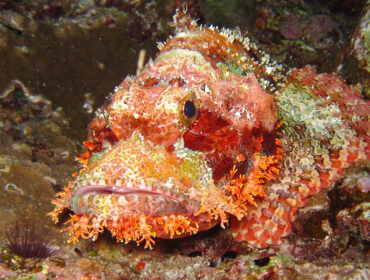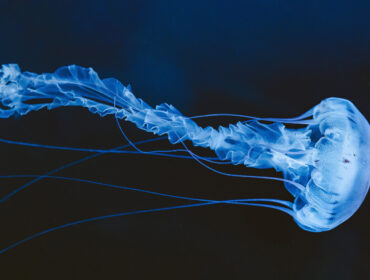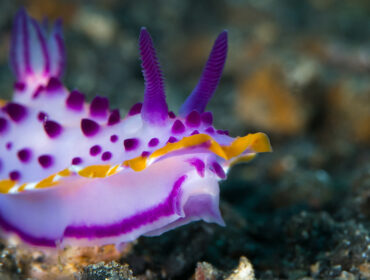Giant squids are among the largest and most fascinating marine species in the world. Now known to the scientific community as Architeuthis, the giant squid was once thought to only be a legend, but today can be found in all the world’s oceans and in many different climate zones.
As its name suggests, the giant squid is far larger than other varieties of squid, with females reaching lengths of up to 43 feet and males up to 33 feet in length. Usually living no longer than five years, the squid possesses the same general anatomy of all species of squid, including eight arms, two long tentacles, and a torso, which is commonly called the mantle. When hunting, Architeuthis will attack its prey with its longer tentacles, sometimes ensnaring its victim from thirty-three feet away. These tentacles have hundreds of powerful sharp tooth suckers that help subdue its prey and bring it to the squid’s sharp beak in the center of its arms.
Architeuthis lives in the deepest depths of the oceans, and although scientists have never viewed its hunting behavior, they have ascertained through deceased samples that the giant squid feeds on many varieties of fish and even other squids. To compensate for the darkness found in the ocean’s depths, the giant squid possesses the largest eyes of any creature in the animal kingdom, which are approximately the size of the average household dinner plate. When full grown, the only major predator of Architeuthis is the sperm whale. Younger squids can find themselves the prey of many ocean predators, however, including many varieties of deep sea sharks. These squids are further believed to be solitary hunters.
Not much is known about the giant squid’s reproductive processes, although scientists believe that males inject sperm packets directly into the female’s arms. In Architeuthis’ short five year lifespan, it is believed that the squid only reproduces once and find mates by chance or by following a chemical signal. It is these facts that lend to the perception of the giant squid leading a most lonely life indeed, but scientists continue to search for more information about this elusive deep sea creature.
Check out this incredible footage of the first living giant squid recorded in its natural habitat, and just try to tell us you’re not curious yourself!




